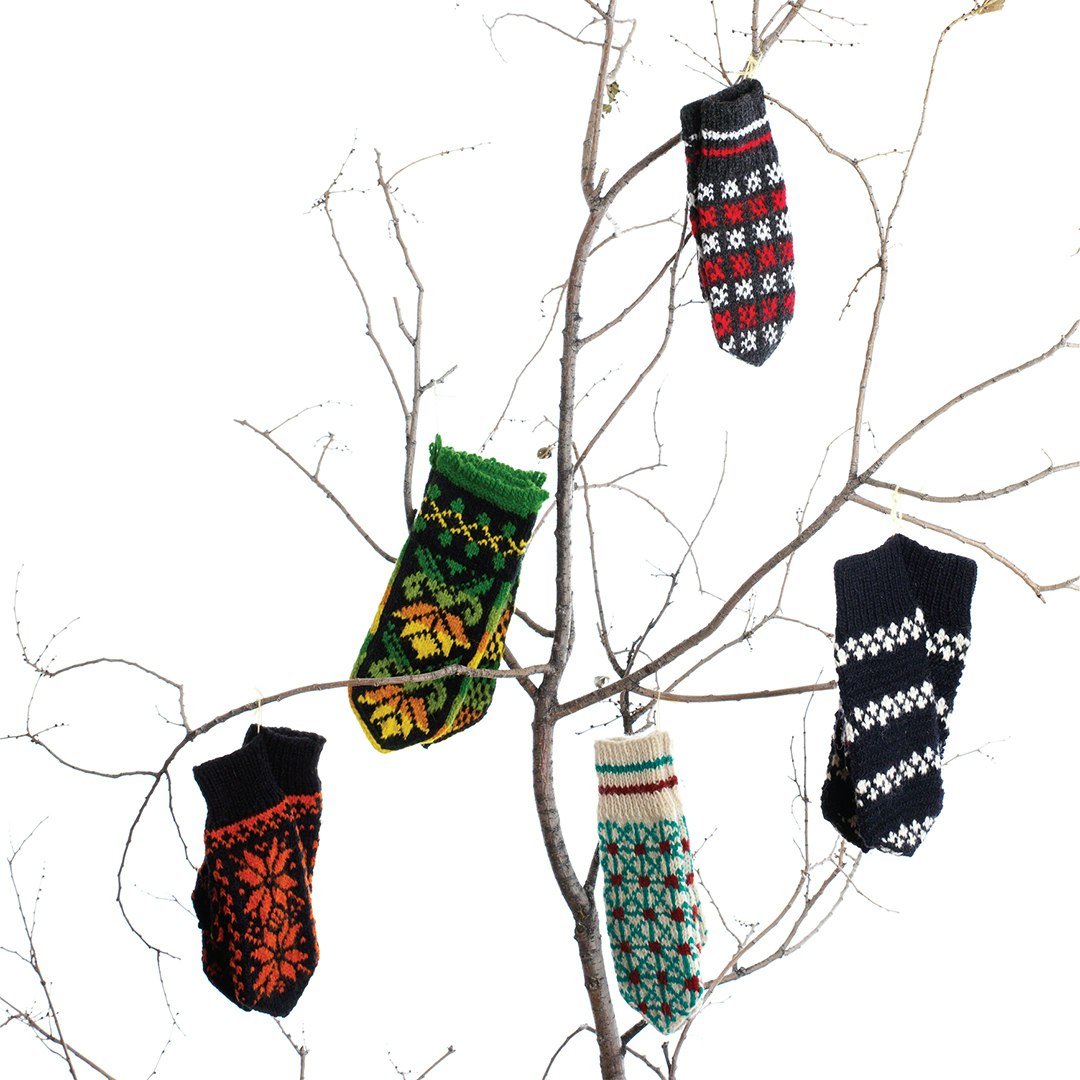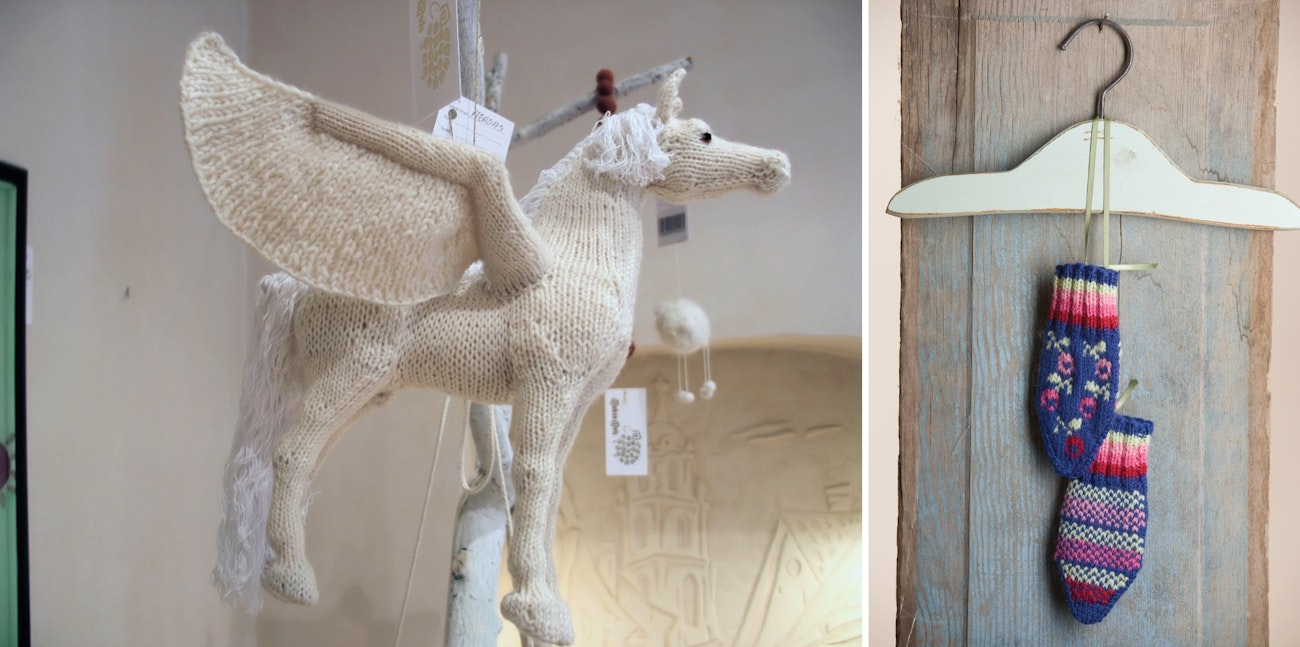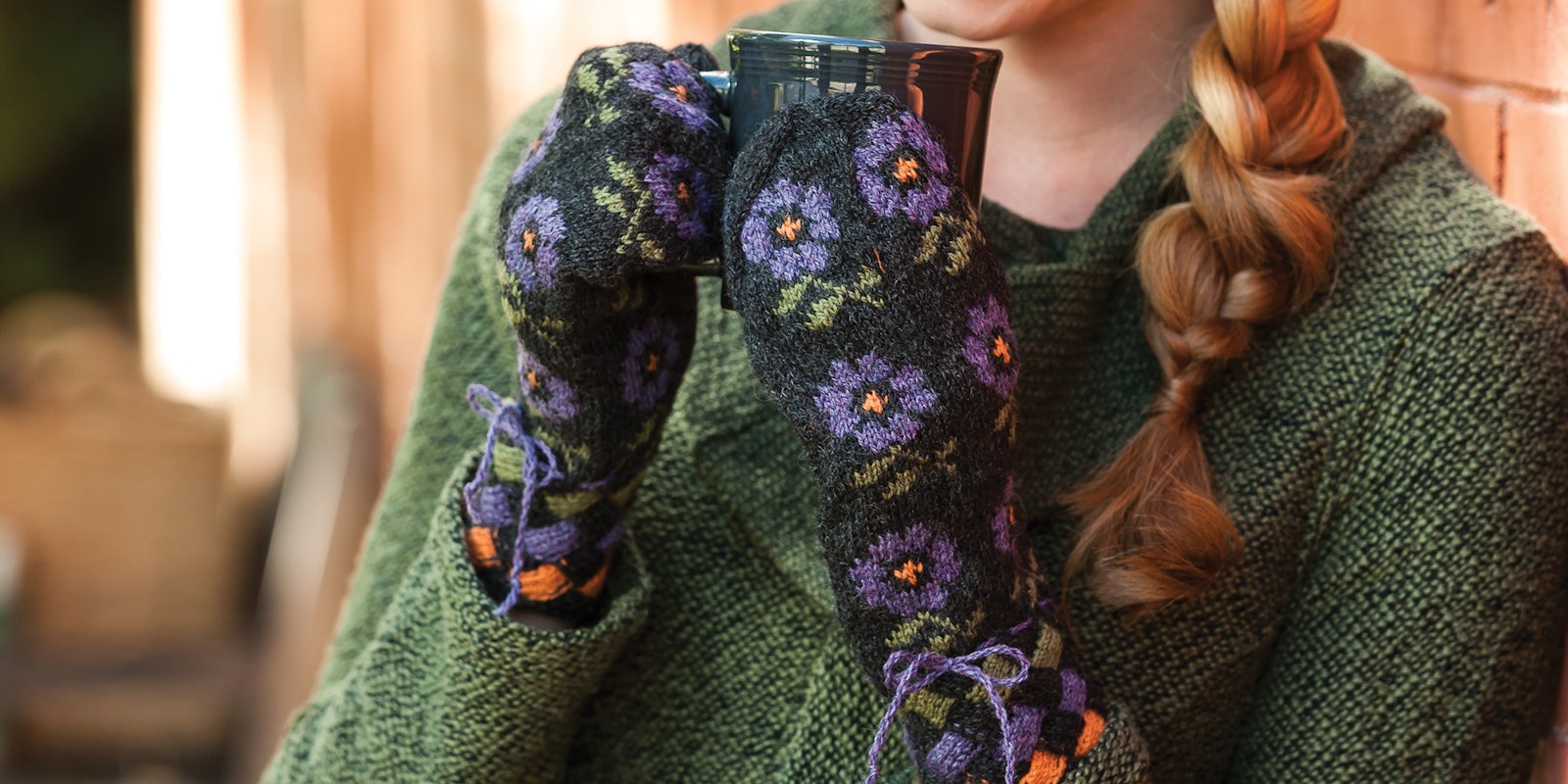MARCH 9, 1009: The first known mention of Lithuania is in the historical records of the monastery of Quedlinburg, a town in Saxony-Anhalt, Germany.
With a history that goes this far back, it’s reasonable to expect that the tradition of handwork in Lithuania also has deep roots. The following comes from frequent PieceWork contributor Donna Druchunas’s article, “The Tradition of Knitting in Lithuania,” in PieceWork’s January/February 2008 issue.
 Knitted mittens purchased by Donna Druchunas in Vilnius, Lithuania. 2007. Photo by Joe Coca
Knitted mittens purchased by Donna Druchunas in Vilnius, Lithuania. 2007. Photo by Joe Coca
“Lithuania has a long history of handwork. Factory-produced textiles and clothing became generally available only at the end of the nineteenth century. One result was that people began to adopt the new clothing and abandoned the wearing of handmade traditional clothing. This trend occurred in not only Lithuania but also wherever factory-made garments were introduced. It appeared that traditional folk costumes would soon disappear. In response, in the early decades of the twentieth century, an effort to preserve national costume began to spread throughout Europe. Collectors, many of whom were Lithuanian–Americans, gathered examples of traditional festival clothing and mounted exhibitions in Paris and other European cities. Today, many museums in Lithuania have collections of traditional clothing as well as reconstructions of textiles that were found, often in advanced states of decay, in archaeological sites around the country. One consequence of the Soviet Union’s rule of Lithuania from 1940 to 1990 was strengthening of the role of the national costume as an element of the people’s cultural identity. When the Soviet Union suppressed the Lithuanian language and any dissent against the Communist Party, wearing a pair of handknitted gloves or mittens might have been the only way one could safely display quiet resistance.”
 Left: A knitted Pegasus in Aukso Avis Gallery in Vilnius, Lithuania. 2007. Photo by Dominic Cotignola. Right: Donna Druchunas knitted these sweet Lithuanian-inspired baby mittens for a companion project to go with her article, “The Tradition of Knitting in Lithuania.” Photo by Joe Coca
Left: A knitted Pegasus in Aukso Avis Gallery in Vilnius, Lithuania. 2007. Photo by Dominic Cotignola. Right: Donna Druchunas knitted these sweet Lithuanian-inspired baby mittens for a companion project to go with her article, “The Tradition of Knitting in Lithuania.” Photo by Joe Coca
Over the years, Donna has contributed several other articles and projects on Lithuanian textiles, many of which focus on knitting. Her latest Lithuanian knitting project—“Lithuania-Inspired Floral and Entrelac Mittens”—is in the January/February 2017 issue of PieceWork.
Interested in learning more about knitting in Lithuania? The full article and companion project can be found in the January/February 2008 issue of PieceWork.
Also, remember that if you are an active subscriber to PieceWork magazine, you have unlimited access to previous issues, including January/February 2008. See our help center for the step-by-step process on how to access them.
Originally published November 3, 2017; updated September 18, 2023.

